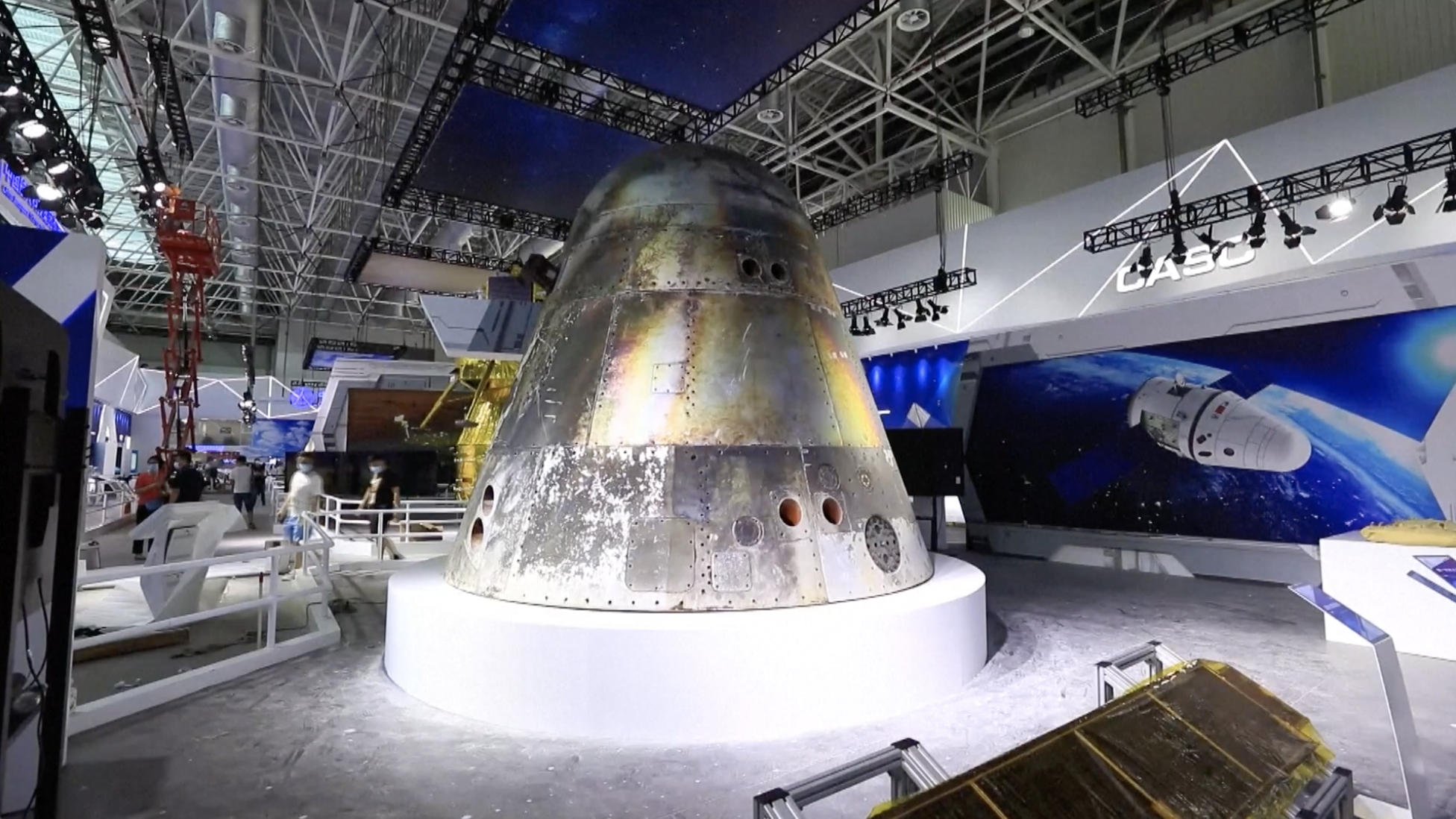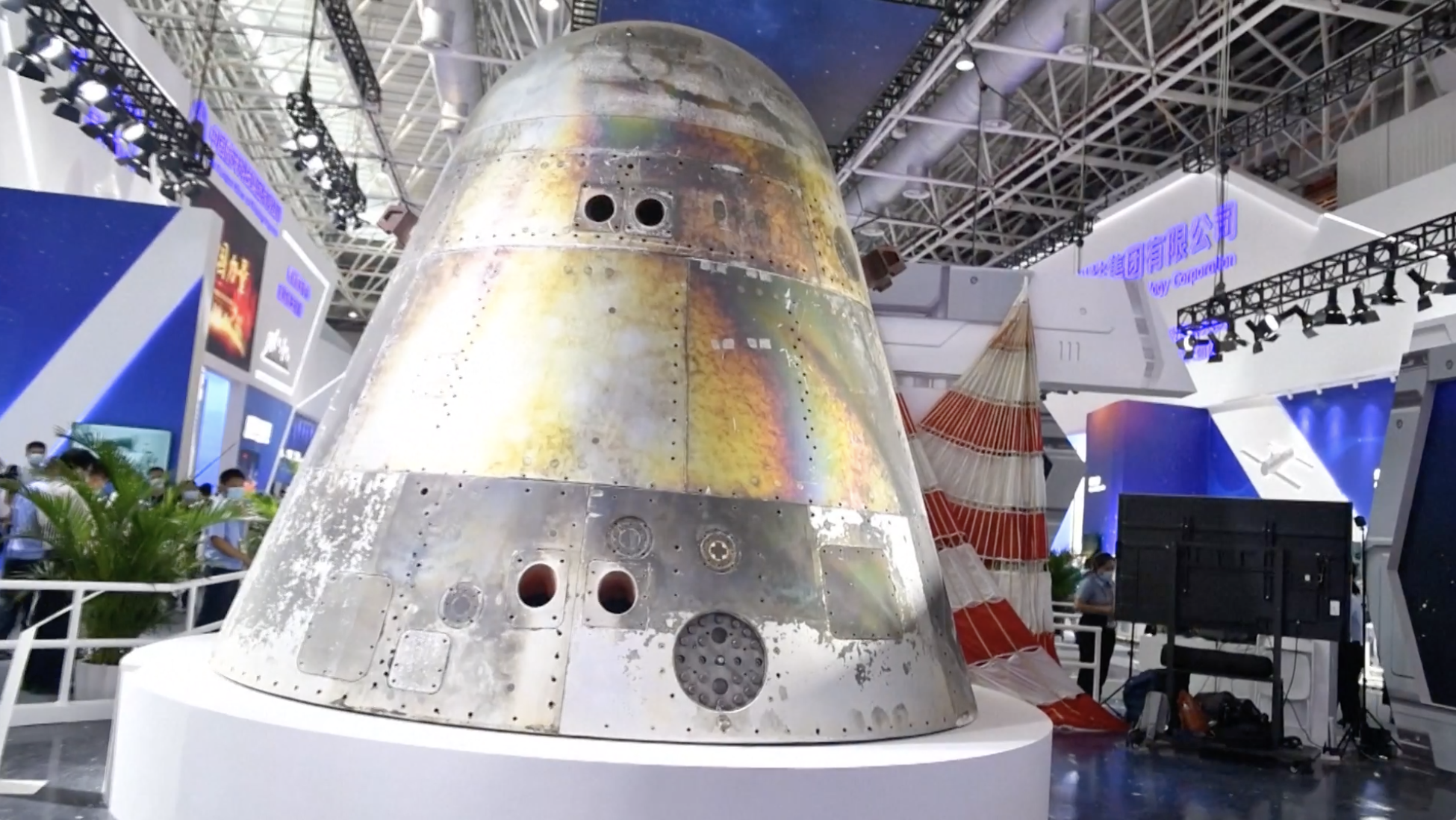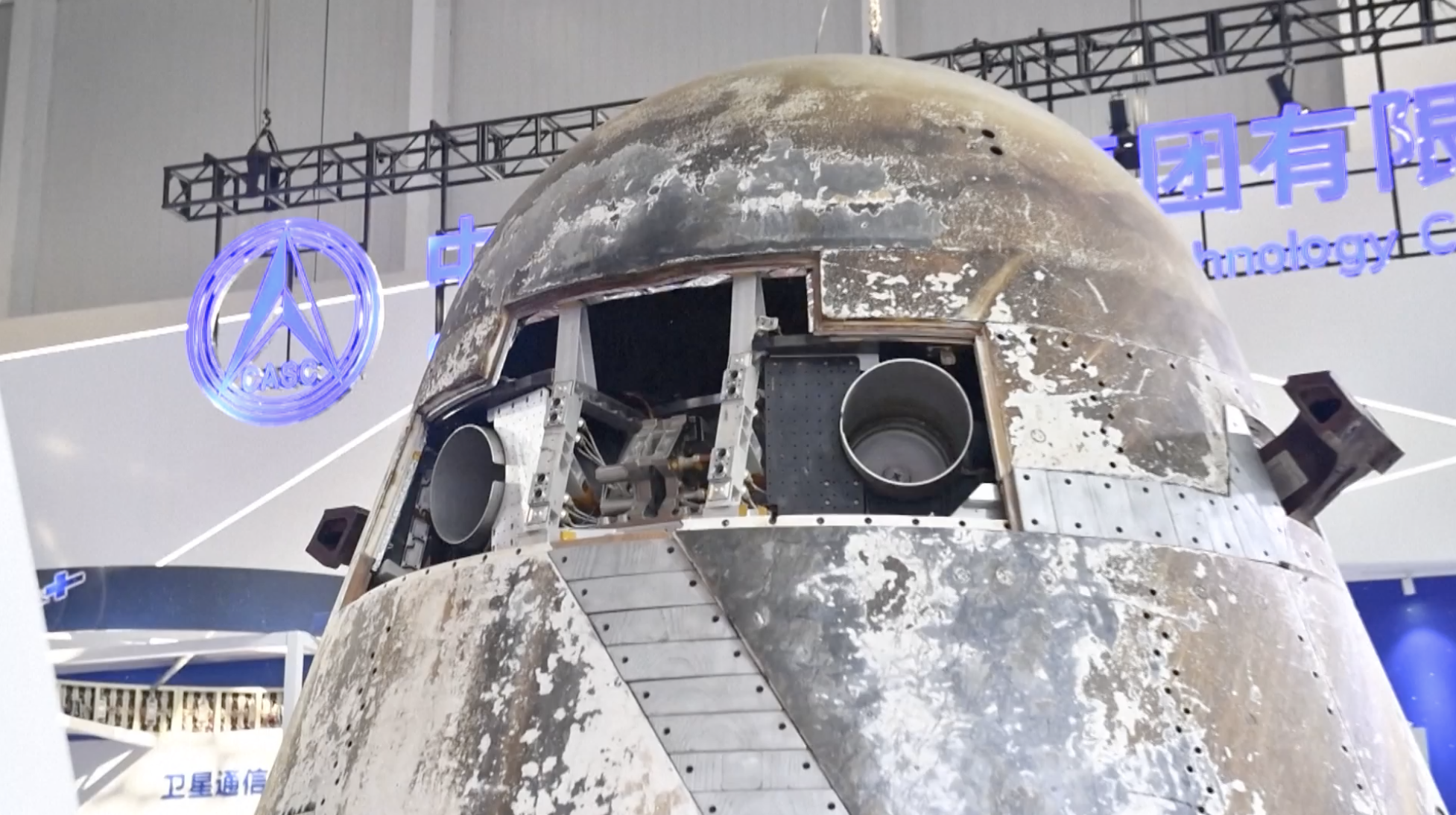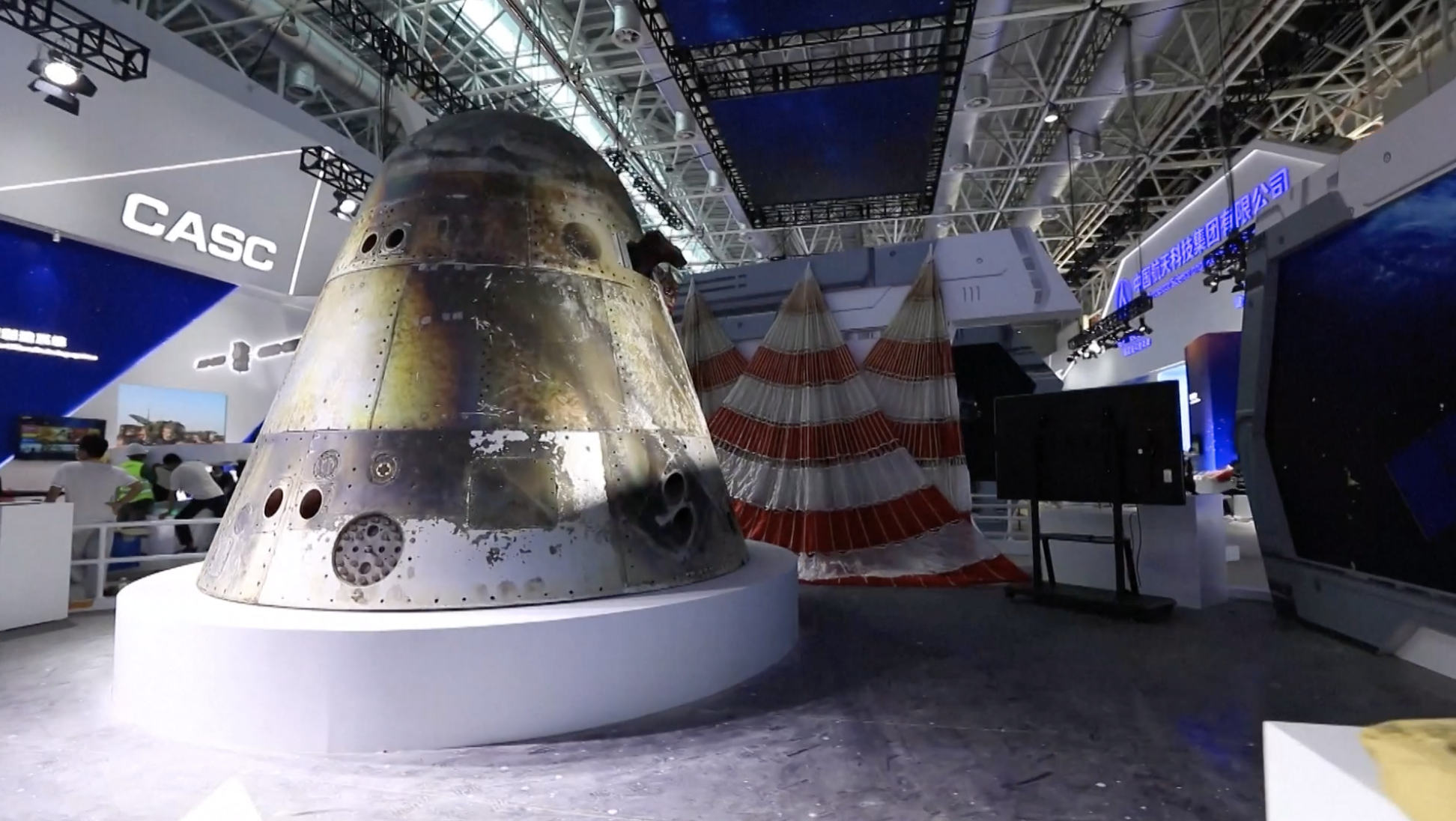
China just put its next-generation spaceship on display
China's next-generation crewed spacecraft, which launched on a demonstration flight last year, has been unveiled to the public eye.
The once-flown capsule is on display at the Airshow China 2021 in Guangdong Province's Zhuhai City. The space capsule, which launched on a Long March 5B rocket in May 2020, is larger than the country's Shenzhou spacecraft in use today. Chinse space officials have said the new space capsule extends the qualities of reliability and safety, and will be reusable.
Related: The latest news about China's space program
Moon exploration capsule




In an interview on China Central Television (CCTV), Huang Kewu, deputy head of the manned lunar exploration general department at the Fifth Research Institute of the China Aerospace Science and Technology Corporation (CASC) said the new space capsule will be critical to the country's spaceflight future.
"The new generation of manned spacecraft is designed to meet the needs of our manned lunar exploration and space station operations in the future," Huang told CCTV. "The new generation of manned space transportation vehicle, which has been tested, could carry six to seven astronauts, while our Shenzhou spacecraft could only take three astronauts."
With a launch mass of 21.6 tons, the next-generation piloted spacecraft is China's largest return and reentry spacecraft launched with the largest amount of propellant. Some of the new technologies were successfully tested in its first flight last year.
Related: China's new space capsule aces maneuvers in test flight
Get the Space.com Newsletter
Breaking space news, the latest updates on rocket launches, skywatching events and more!
Test flight success
The prototype next-generation spacecraft launched into orbit by a Long March 5B rocket on May 5, 2020 from China's Wenchang Space Launch Center, Wenchang, Hainan Province. The spacecraft landed safely on May 8 at the Dongfeng landing site and is designed for transportation of both astronauts and cargo.
The right side of the vehicle carried nearly 1,000 pieces of supplies to verify the the spacecraft's cargo capacity. The left side of the craft was configured as a living area for astronauts, with a folding table and a toilet.
The experimental spaceship flew in orbit for two days and 19 hours, during which it carried out a series of space science and technology experiments, according to the China Manned Space Agency (CMSA).
"We have achieved significant breakthroughs in thermal protection and precision control for the return and reentry, as well as in engine design and undamaged landing," Huang told CCTV.
"The achievements in manned space transportation technologies have enabled us to take a leap from lagging behind the pacemakers to running beside them, and this lays a sound technological foundation for our future manned lunar spacecraft," he added.
Leonard David is author of the book "Moon Rush: The New Space Race," published by National Geographic in May 2019. A longtime writer for Space.com, David has been reporting on the space industry for more than five decades. Follow us on Twitter @Spacedotcom and on Facebook. This version of the story was published on Space.com.
Join our Space Forums to keep talking space on the latest missions, night sky and more! And if you have a news tip, correction or comment, let us know at: community@space.com.

Leonard David is an award-winning space journalist who has been reporting on space activities for more than 50 years. Currently writing as Space.com's Space Insider Columnist among his other projects, Leonard has authored numerous books on space exploration, Mars missions and more, with his latest being "Moon Rush: The New Space Race" published in 2019 by National Geographic. He also wrote "Mars: Our Future on the Red Planet" released in 2016 by National Geographic. Leonard has served as a correspondent for SpaceNews, Scientific American and Aerospace America for the AIAA. He has received many awards, including the first Ordway Award for Sustained Excellence in Spaceflight History in 2015 at the AAS Wernher von Braun Memorial Symposium. You can find out Leonard's latest project at his website and on Twitter.









